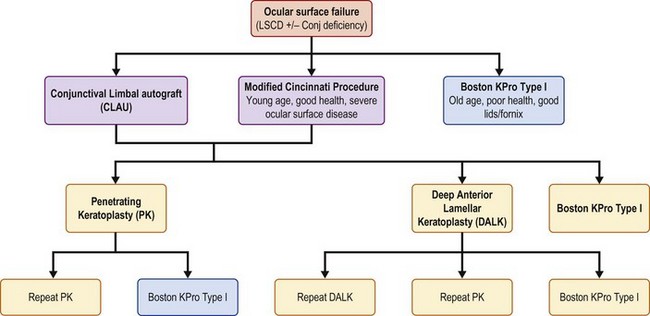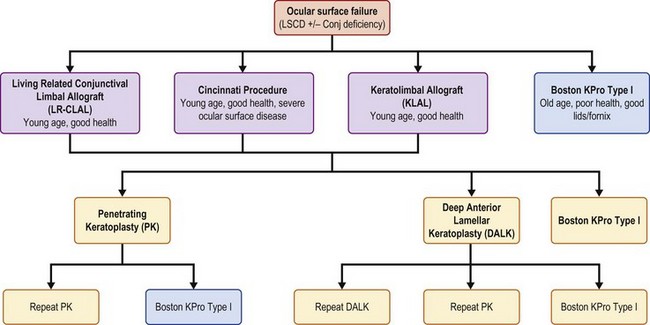54 The options for ocular surface stabilization using medical treatment are outlined in Box 54.1. While medical therapy can be both helpful and often necessary for restoration of the integrity of the ocular surface, it may not be suitable as a long-term treatment option, especially if there is severe stem cell damage. In conditions resulting from severe stem cell deficiency, management options shift to surgical alternatives. The flow diagrams outline our approach to decision-making in the surgical treatment of ocular surface disease based on whether the pathology is unilateral (Fig. 54.1) or bilateral (Fig. 54.2). The primary considerations for decision-making in the surgical management of ocular surface disease from stem cell deficiency include: (1) the laterality of disease, (2) the degree of stem cell involvement, (3) the level of tear production/baseline tear status, and (4) whether or not there is conjunctival inflammation. The presence of conjunctival inflammation is a particularly important finding and may have significant bearing on the surgical planning for repair of the damaged ocular surface. Treatment strategies are outlined in the flowcharts for unilateral disease (Fig. 54.1).
Treatment Paradigms for the Management of Severe Ocular Surface Disease
Introduction
Surgical Treatment Options
Treatment Paradigms for the Management of Severe Ocular Surface Disease


















